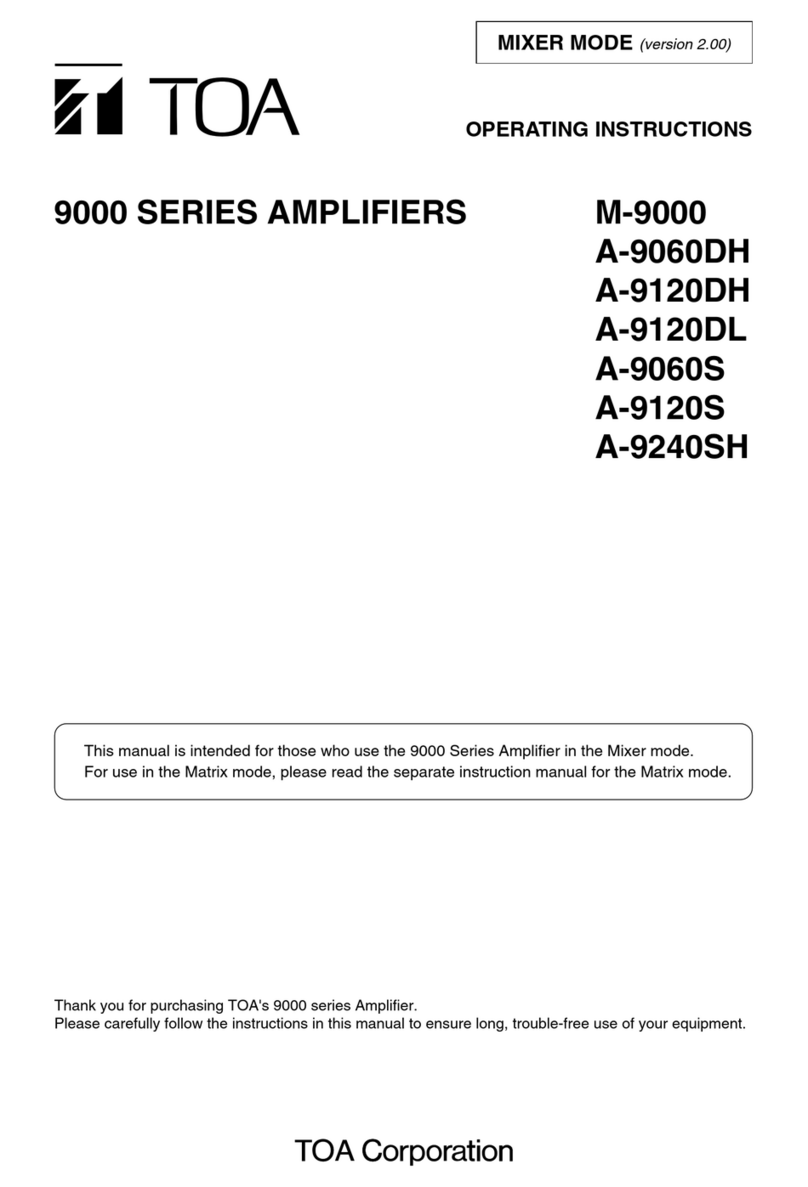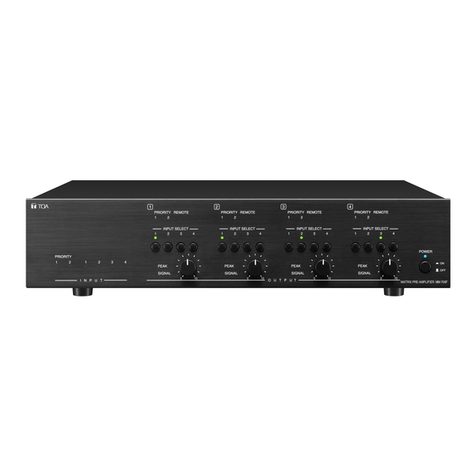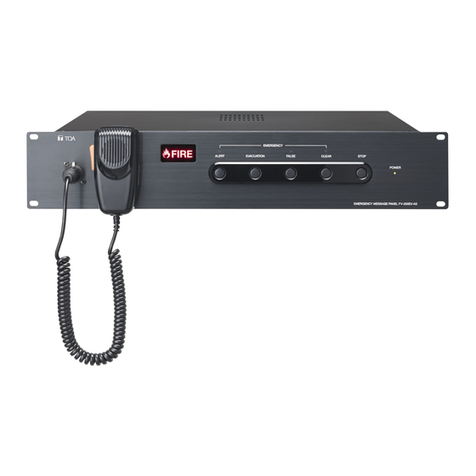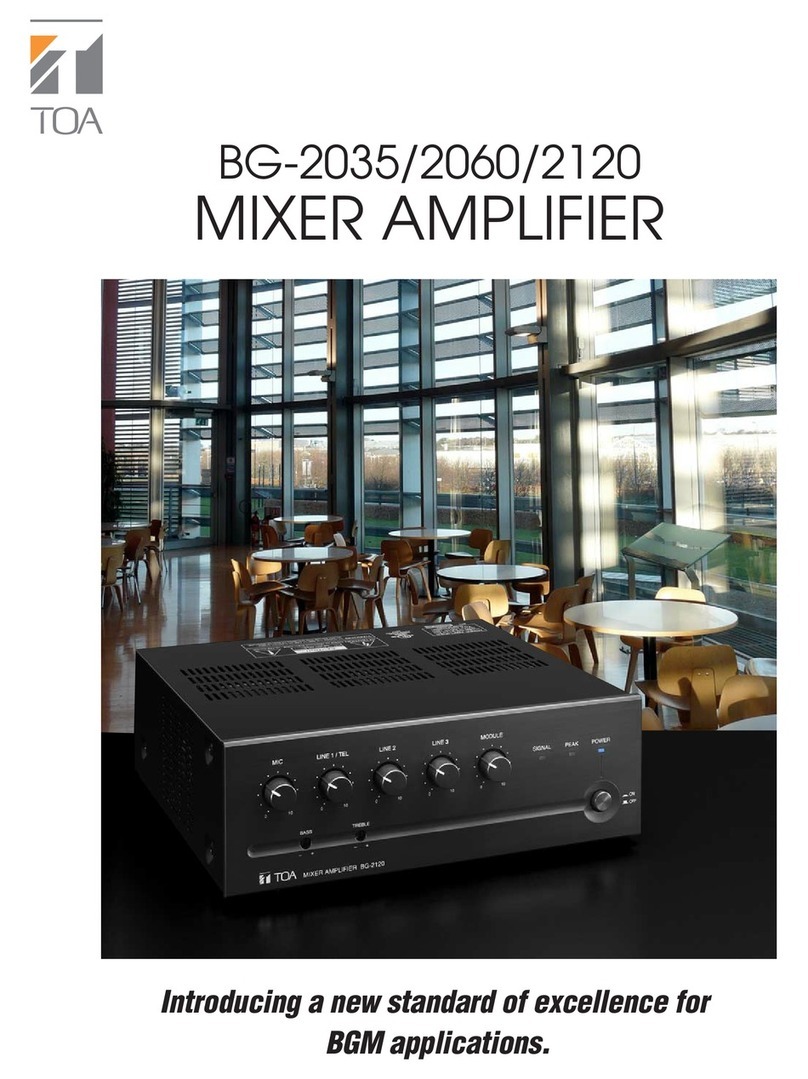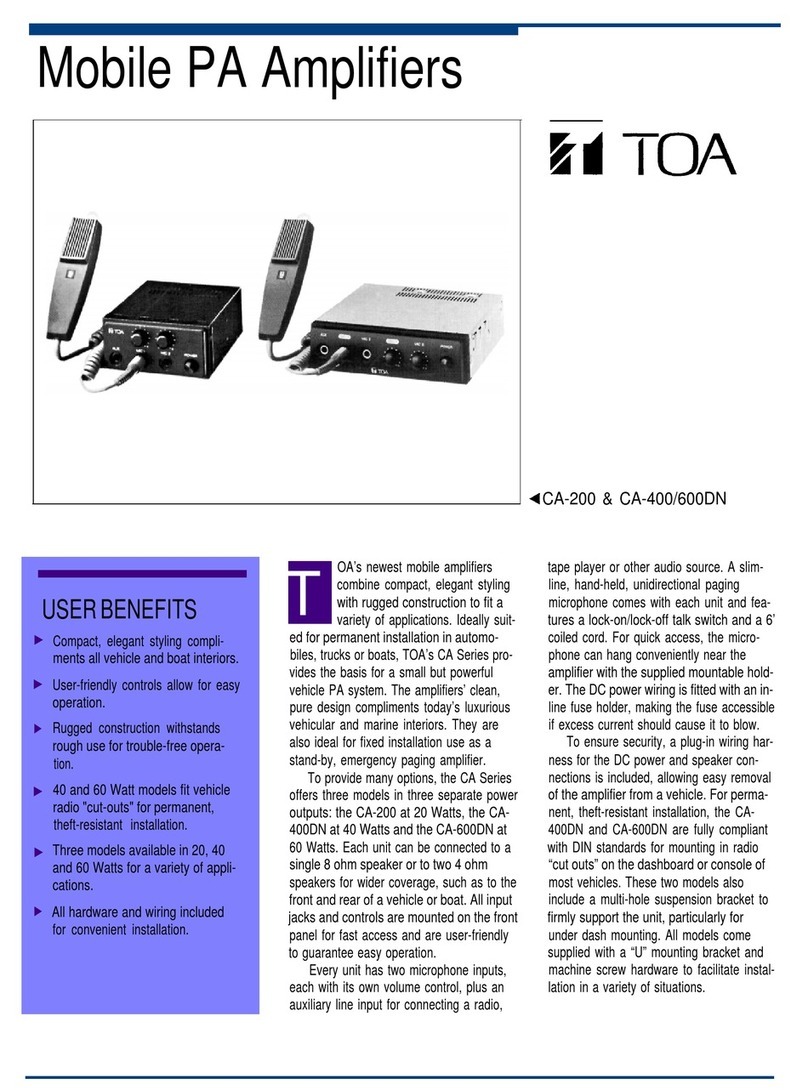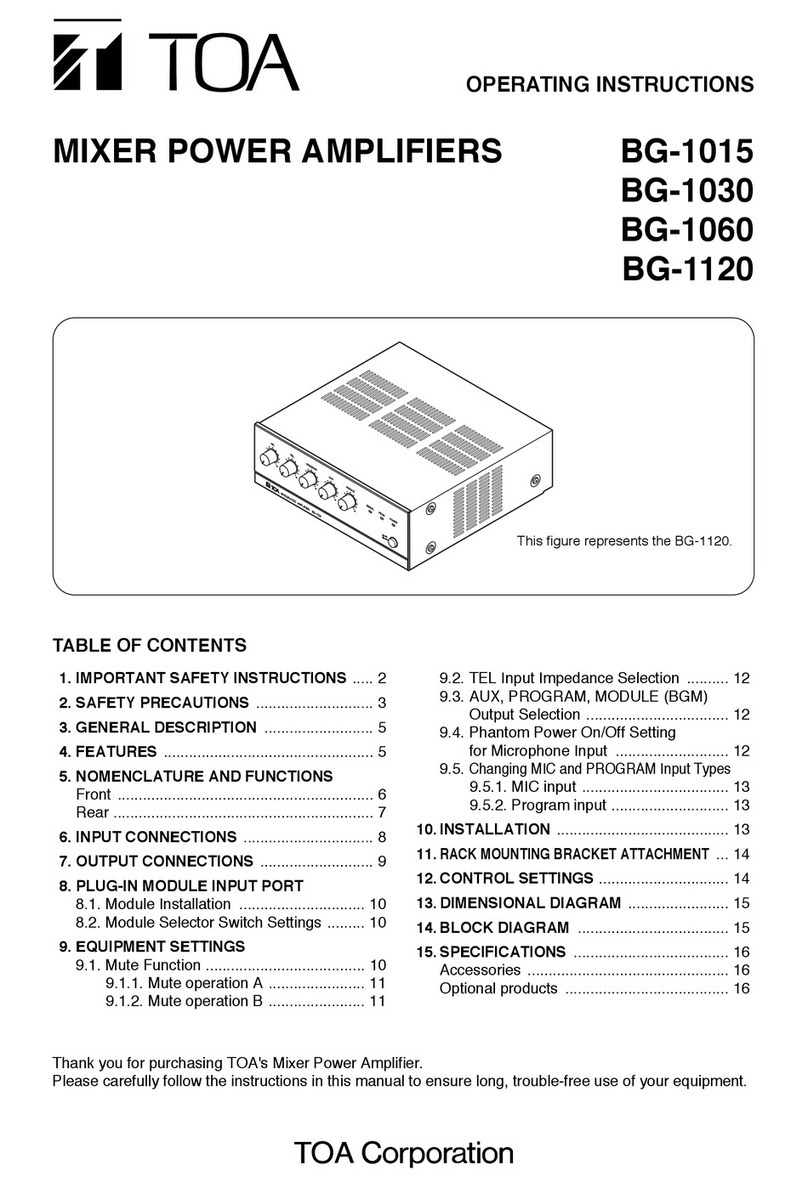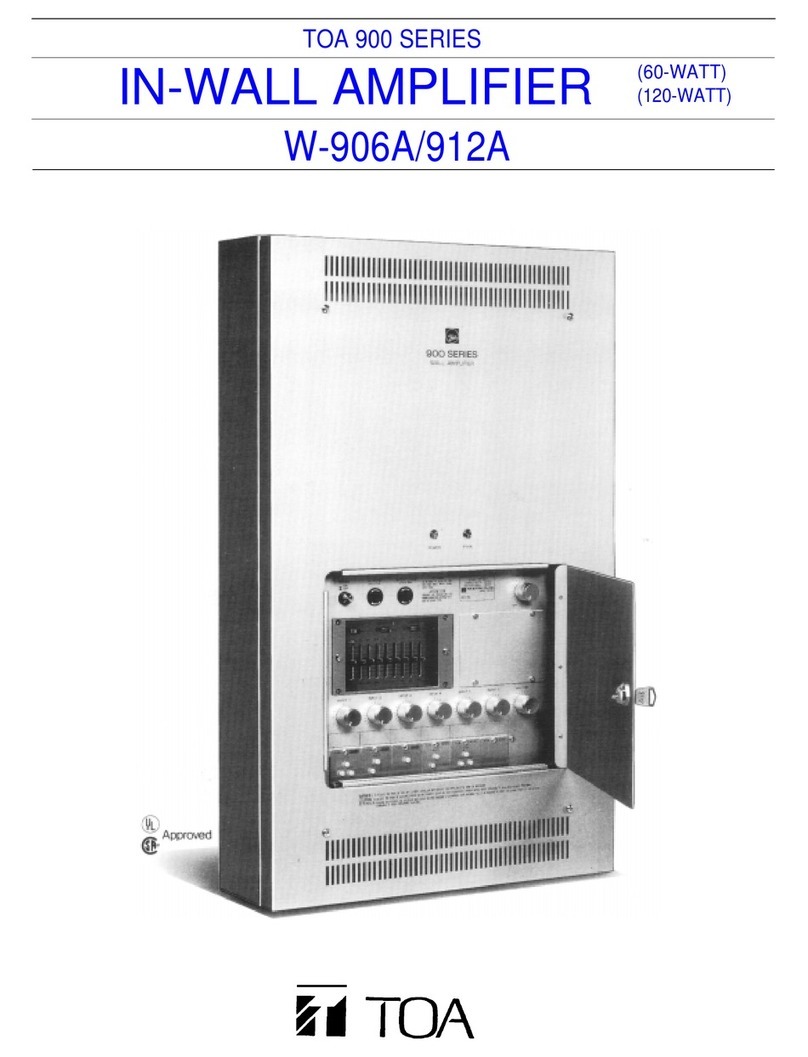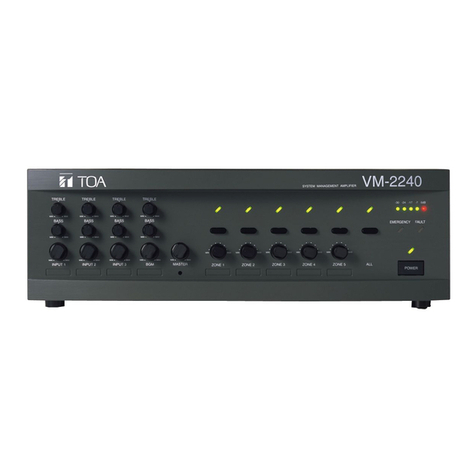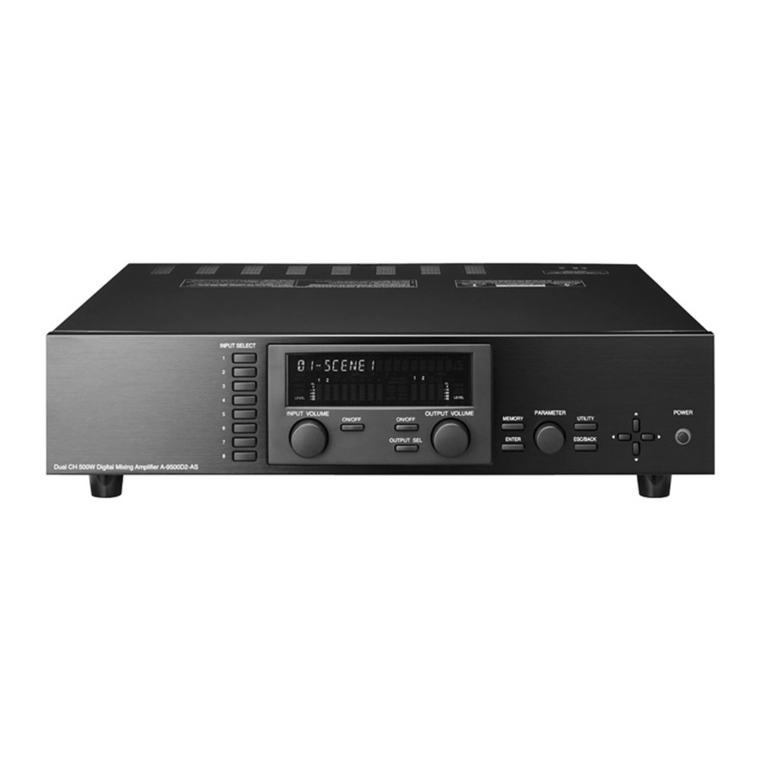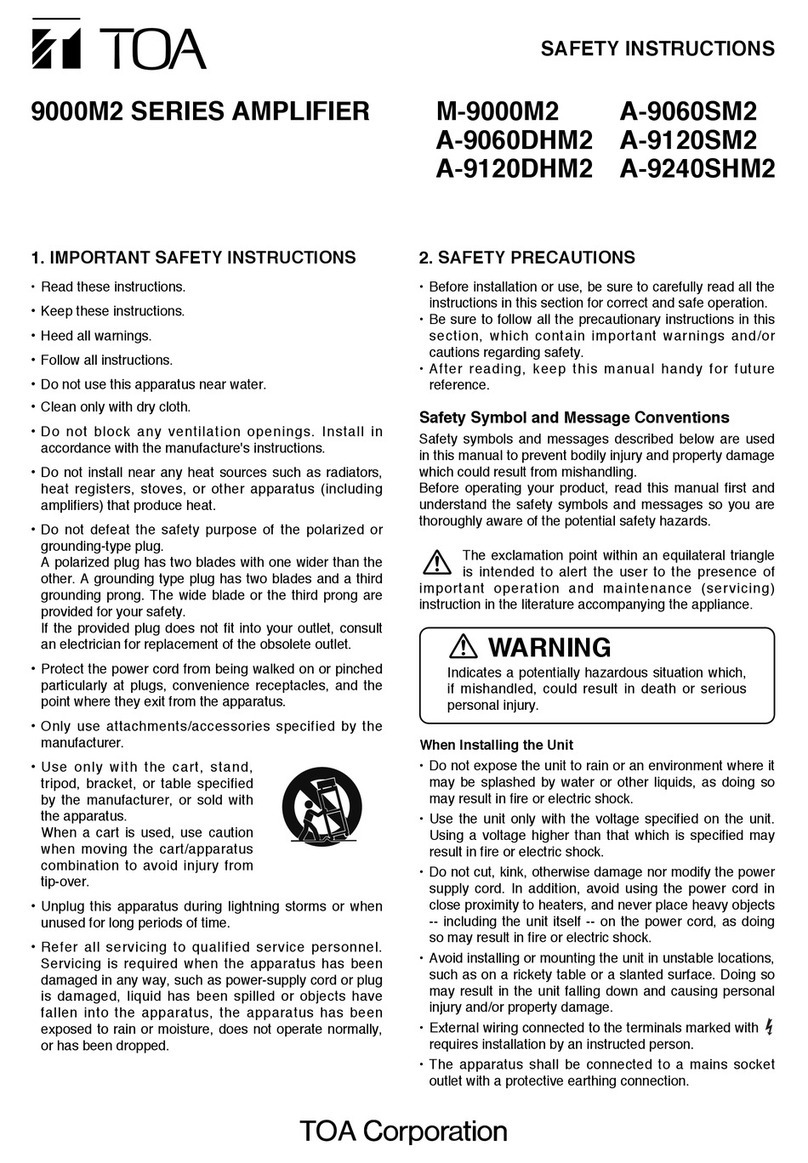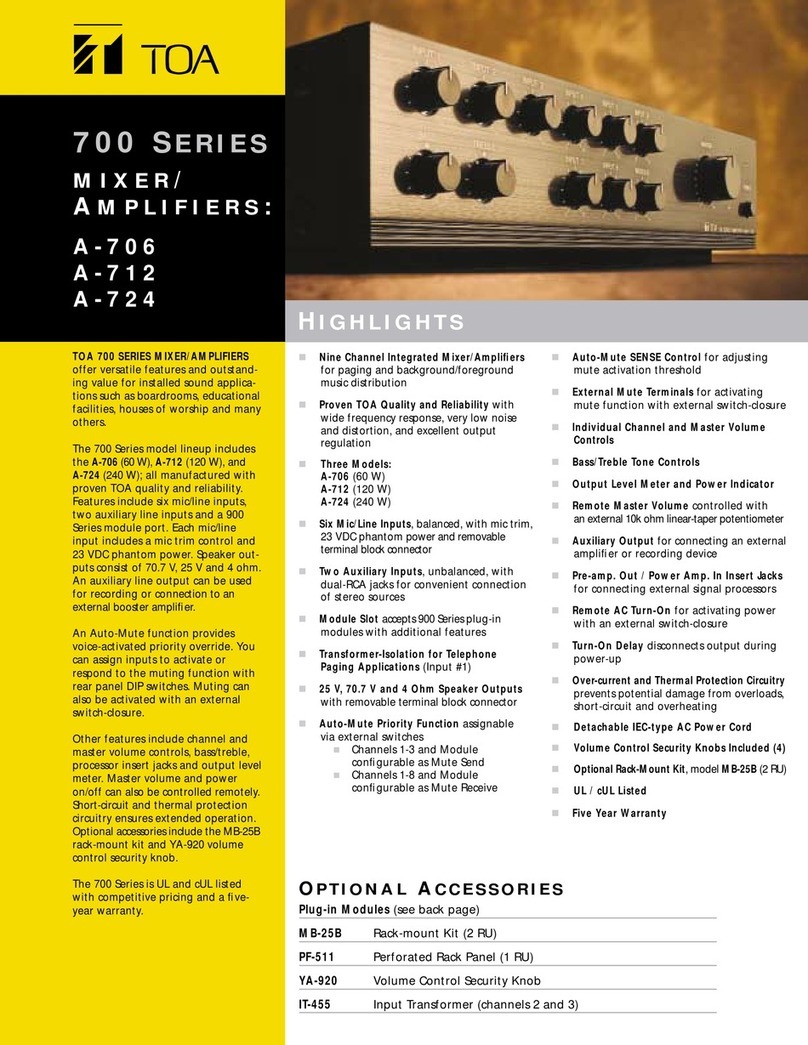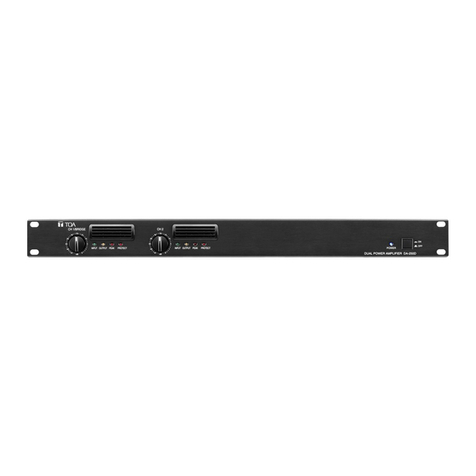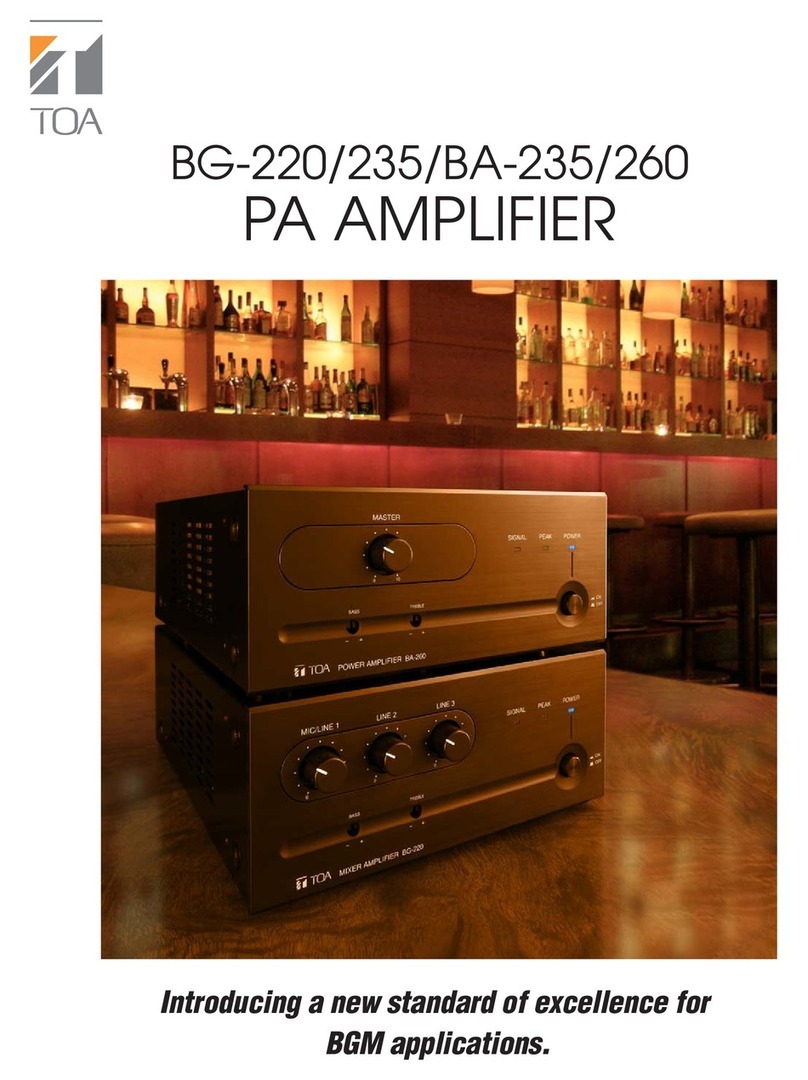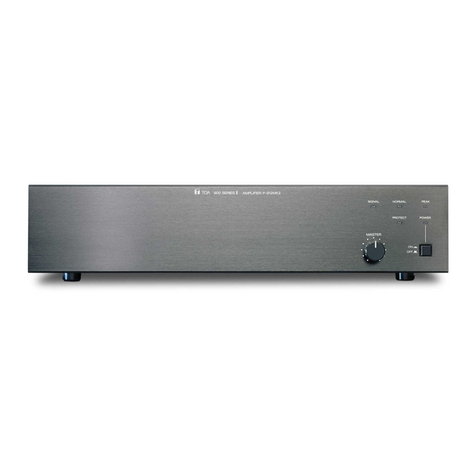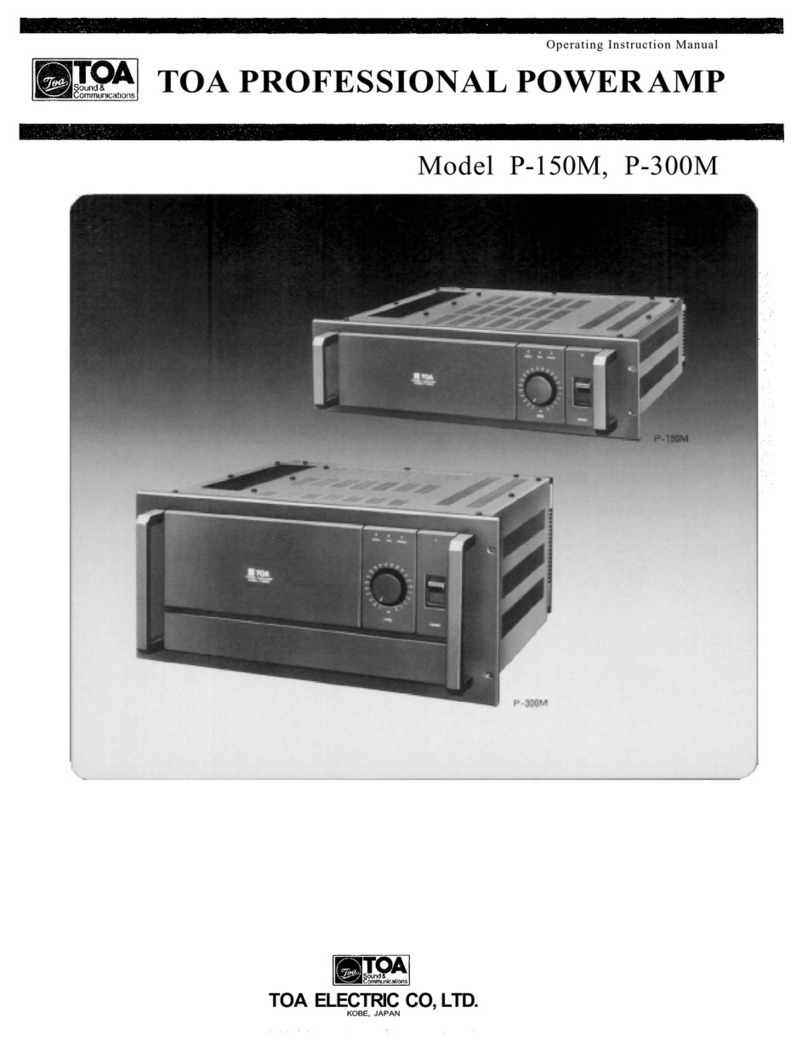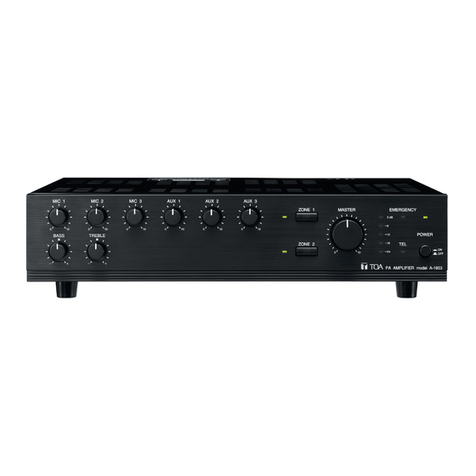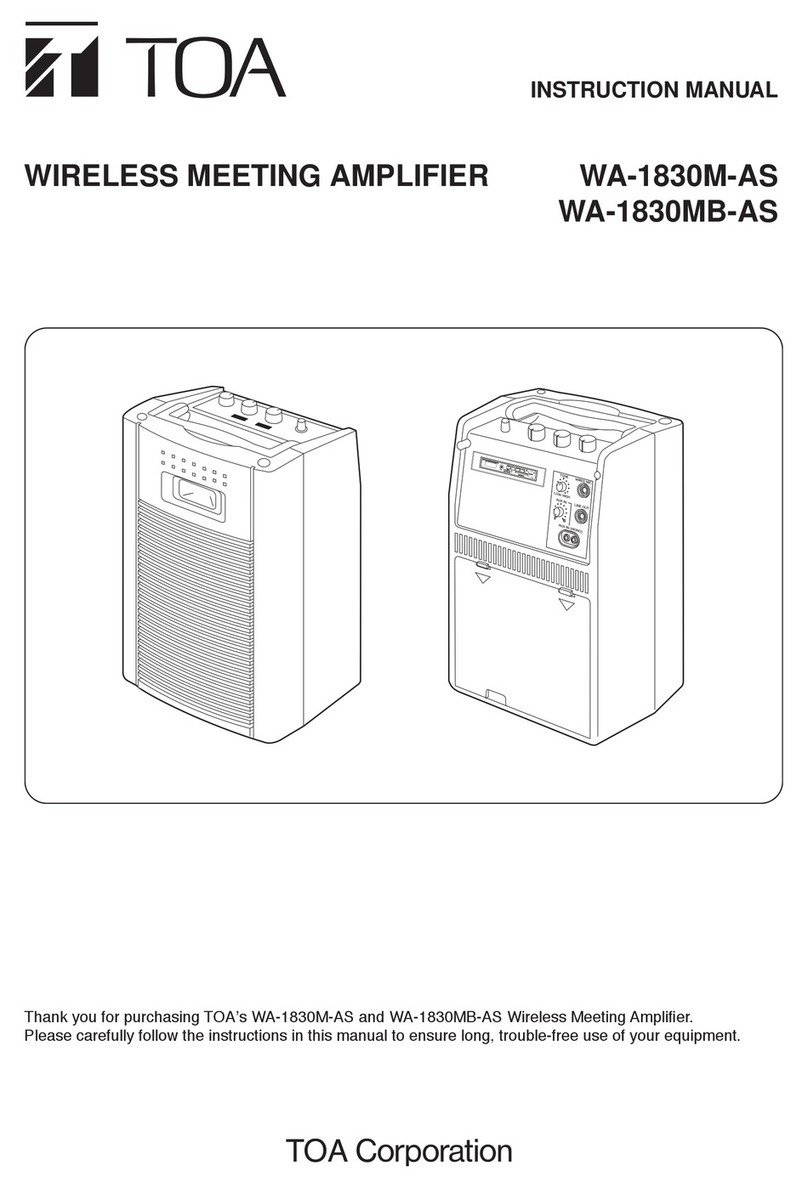2
TOA Electronics Amplifier Guide
Chapter 1: Selecting An Amplifier
Amplifiers are the heart of any sound system. In addition to providing the audio power for a system,
amplifiers may also incorporate the input mixing and control functions vital to a system’s operation
(such an amp is called a mixer/amplifier). Selecting the right amplifier or mixer/amplifier for a job
means choosing a set of features and characteristics suited to meet the customer’s needs. The main
characteristics of an amplifier or mixer/amplifier include:The number and type of input channels,the
number of busses (signal paths) and output channels,and the amount of output power per channel.
Dimensions,weightandotherbasicparametersmayalsobeimportant,dependingontheinstallation.
Features needed for a job may include:Auto-muting (e.g.voice-over-music),remote volume control,
transformer-isolated inputs/outputs, phantom power, bass/treble controls, multi-level muting, rack
mounting,equalization,or any of a number of other special purpose features.
When selecting an amplifier,there are three key questions to consider:
1. What sound sources will be used?
2. What speakers will it be driving?
3. How does the client or end user need the system to operate?
Answerstothesequestionswilldictatewhatcharacteristics and featuresare needed. Belowisamore
detailed look at each question.
Sound Sources
One of the first questions you will need to answer,at least in general,is what sound sources will be
usedinthesystem. Willthesystembeusedwithmicrophones? ACDplayer? Atelephoneexchange?
Due to standardization,many sources can be treated similarly — for example, CD and DVD players,
VCRs and computer sound cards all provide unbalanced line level outputs,usually with a similar out-
put level,and thus may be treated the same in the design phase. But it is still important to know how
many such sources you will have,and what other sources may also be used.
Speaker Requirements
Two more key questions when selecting an amplifier is how much power is needed,and what kind of
load(impedance)thespeakerswillpresent—andhere,theanswerswilldependonthetypeofspeak-
ers used. It is usually preferable to select the speakers,or at least the general type of speakers,before
selecting the amplifier. Please refer to the TOA Speaker Guide for information on selection and place-
ment of speakers. Once the type of speakers has been determined, it will be possible to choose an
amplifier with adequate power and an appropriate output impedance. See Chapter 3
“Amplifier/Speaker Matching”for discussions of impedance,power levels,and 70.7V/25V line operation.
System Function
The paramount rule of sound system design is almost too obvious, and yet it is all too often over-
looked: it is important to let the system design be guided by the needs of the client or end user,and
the function they need the system to fill. For example,if they need the mic to automatically mute the
music,you will need a mixer/amplifier that includes this feature. Often,the user won’t be very
